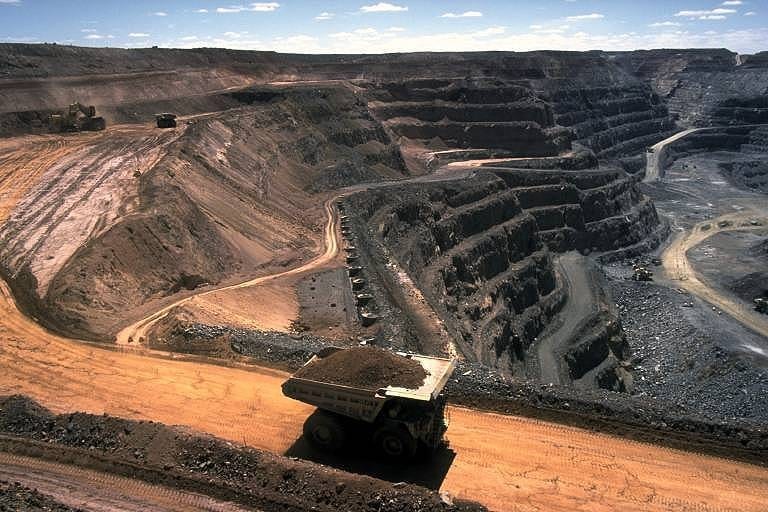Resources giant BHP has committed $US400 million fund ($570 million AUD) to invest in projects that will help reduce the climate change impacts of its business operations.
BHP will target emissions across the full value chain of its products and will – for the first time – link executive remuneration to the achievement of the company’s emissions reductions targets.
Announcing the initiatives in a speech in London, BHP CEO Andrew Mackenzie said BHP would use the Climate Investment Program to invest in any technologies that would reduce greenhouse gas emissions, including renewable energy, but also potentially including nuclear and carbon capture and storage, believing there was a need to take an “all of the above” approach to emissions reduction technologies.
An approach that includes open support for carbon capture and the use of nuclear energy would be convenient for BHP’s current operations, which includes coal mines in Australia and Columbia, as well as substantial uranium ore extraction at the Olympic Dam site in South Australia, the world’s largest deposit of the nuclear fuel.
“There is no one simple ‘silver bullet’,” Mackenzie said.
“Renewables, nuclear, hydrogen, long-term storage of electricity, coal and gas with carbon capture and storage (CCS), negative emissions technologies like re-forestation and biomass with CCS, and other approaches will all contribute to lower carbon outcomes.”
At times, Mackenzie appeared to criticise renewable energy technologies, claiming they took away from agricultural lands and have unresolved waste issues, potentially exhibiting a misunderstanding of the overall environmental impacts of renewables compared to coal and nuclear fuel production.
“While renewables are powerful levers for decarbonisation they compete for land which could be used for agriculture and urbanisation, or for conservation and leisure,” Mackenzie added.
“They produce more waste relative to some other sources of energy, and can cause local destruction of wildlife. Renewables, like batteries, also require more mined resources, which is good for us, but perhaps not for others.”
Mackenzie made these claims despite the ability for lands used for renewable energy projects, particularly solar and wind, can continue to be used for agricultural production without much disruption, unlike coal and uranium extraction that is totally destructive of agricultural land.
However, BHP did acknowledge its place in the value chain, recognising that scope-2 and scope-3 emissions can be a significant factor in the emissions of resources products. The company sees working cooperatively with suppliers as well as customers as an opportunity to reduce the climate change impacts associated with its operations.
Recognising that there significant greenhouse gas emissions associated with the processing of the materials BHP supplies to its customers, such as the conversion of iron ore into steel products, Mackenzie also said BHP would work with both its suppliers and its customers, to reduce the scope-1, scope-2 and scope-3 emissions associated with BHP’s resources.
BHP has been ranked as one of the 90 companies that are responsible for two-thirds of historical human-made greenhouse gas emissions, a list that predominantly includes oil, gas and coal producers like BHP.
While BHP’s operations are a substantial source of greenhouse gas emissions, these are dwarfed by the amount of emissions produced through the use of resources produced by BHP, particularly through the burning of coal and gas the company provides to its customers.
Mackenzie said that BHP will establish an interim target for reducing the company’s emissions, to establish a pathway towards decarbonisation, but also that BHP will put pressure on its customers to reduce their emissions, recognising the substantial greenhouse gas emissions associated with converting the materials and products produced by BHP into end products.
“Next year we will set a medium-term, science-based target for the decarbonisation of BHP operations, which will reflect the goals of the Paris Agreement.”
“We won’t stop at the mine gate we will also increase our focus on scope 3 emissions. These emissions are generated as customers transport, transform and use our products to serve the needs of billions of people and they are almost forty times higher than the emissions from our own operations.”
“We must take a product stewardship role for emissions across our value chain and commit to work with shippers, processors and users of our products to reduce scope three emissions,” Mackenzie added.
BHP, one of the world’s largest coal miners, has faced growing pressure to decarbonise its operations, including calls for the company to proactively transition away from fossil fuel production, as well as calls for the company to review its involvement in pro-coal lobby groups.
While BHP recognises that a growing shift towards the electrification of energy use, provides an opportunity for resources companies to shift their focus from coal extraction to acting as a provider of the raw materials necessary for the production of renewable energy, battery storage and electric vehicle technologies.
Mackenzie made reference to the role of metallurgical coal in the production of materials for electric vehicle production, but stopped short of making any further commitments regarding the future of BHP’s thermal coal mines. BHP has previously said that it anticipates that electric vehicles could represent half of all new vehicle sales by 2030.
“Our iron ore, metallurgical coal, copper and nickel provide the building blocks for electric vehicles and renewables,” Mackenzie said.
BHP has made some moves to integrate renewables into its own operations, including using solar and storage to power its mine sites, which is likely related to the potential for cost savings.
Australian competitor, Rio Tinto, last year announced that it had divested itself of all of its coal assets, seeing greater opportunities to focus on the extraction of minerals. BHP still operates thermal coal mines, but has however acknowledged that the rise of renewables and the electrification of many industries is diminishing the future prospects of thermal coal use.
The sentiment of the announcement from BHP has been welcomed, but some, including Tim Buckley director of energy finance studies at the IEEFA, have said that BHP must follow through with meaningful actions.
“As CEO of BHP, Andrew Mackenzie has acknowledged that the world’s dependence on fossil fuels carries existential risks and that the evidence of global warming is indisputable,” Buckley said.
A clear message, as is the acknowledgement that BHP must take public responsibility for whole-of-value chain emissions – scope 1,2 & 3. IEEFA sees BHP as finally stepping up to take a leadership role in this critical, global debate to transition to well below 2 degrees. Now we need to see BHP’s actions match its important new rhetoric.”
As part of the plans, BHP will update its 2-degree scenario analysis for the future projected impacts of climate change on the company’s portfolio of resources projects.
Such scenario analysis as emerged as a crucial tool for investors and companies to assess the potential risks that climate change, and the need to shift towards a decarbonised economy will have on operations, particularly for companies heavily involved in the fossil fuel sectors.










